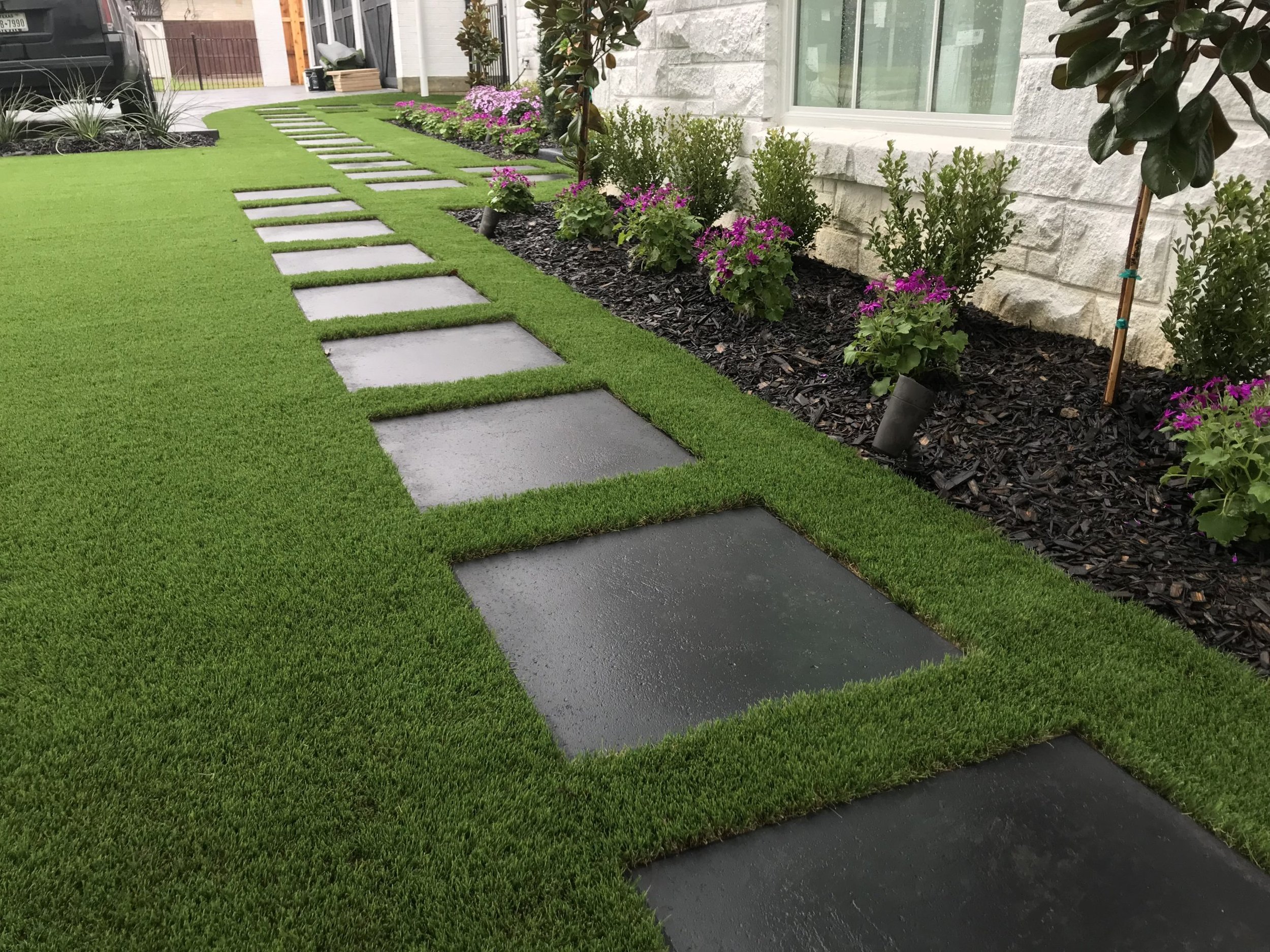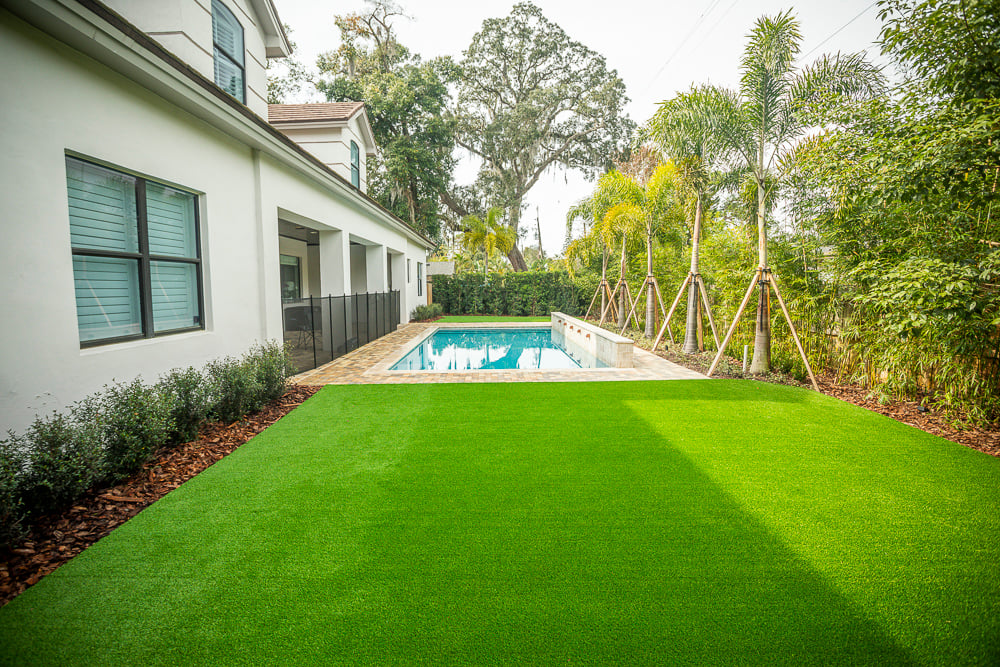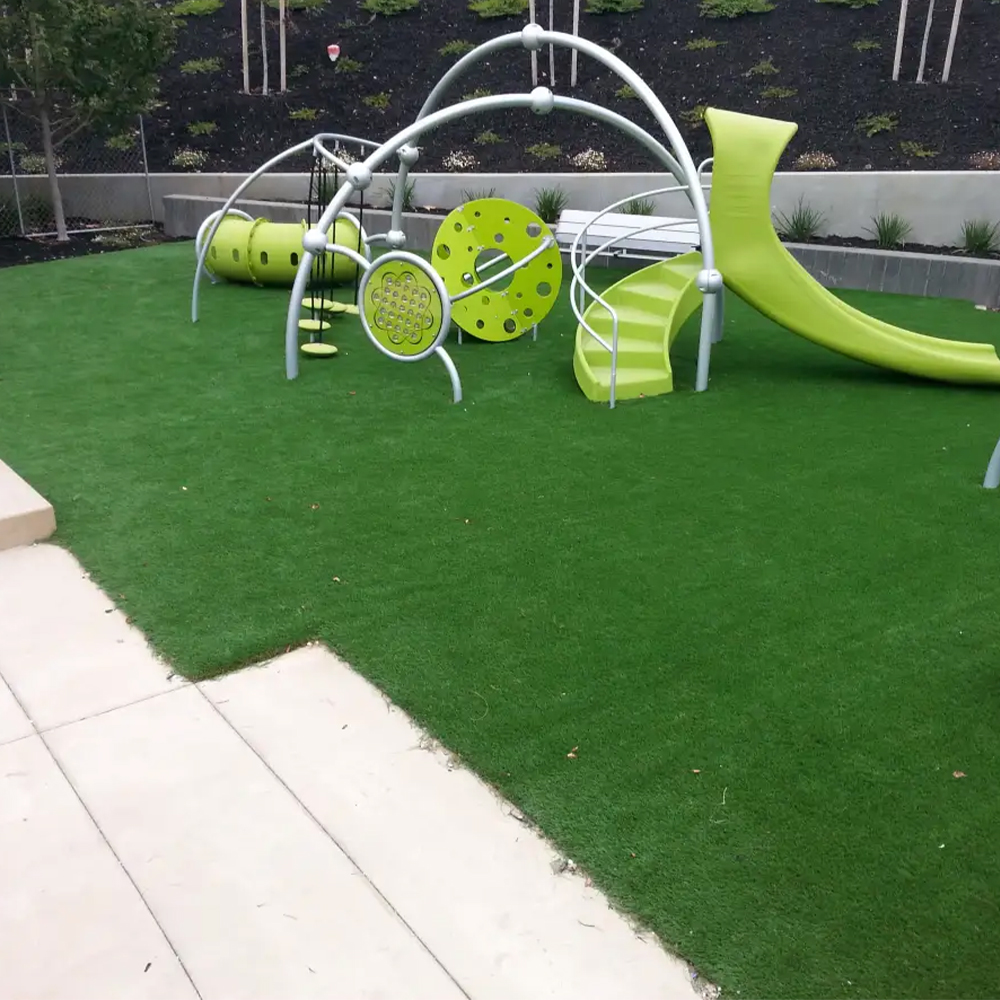Top-Grade Arizona Turf Options for a Beautiful and Green Landscape
Wiki Article
Delve Into the Environmental Benefits of Opting for Synthetic Grass Solutions
The fostering of artificial turf solutions provides a compelling chance to resolve pressing environmental obstacles. By significantly minimizing water use and minimizing the application of unsafe chemicals, these options not only advertise lasting landscaping but likewise secure neighborhood communities.Water Preservation Perks
Among one of the most substantial benefits of artificial turf is its ability to conserve water. Conventional turf lawns need considerable watering, particularly in areas susceptible to drought or water restrictions. On the other hand, synthetic grass does not require watering, dramatically reducing the total need for water resources. This function is particularly useful in arid regions where water scarcity is a pressing problem.By removing the need for regular watering, fabricated turf contributes to lasting landscape practices and helps alleviate the environmental impact of extreme water intake. The conservation of water extends to the decrease of drainage, which can lead to soil erosion and waterway pollution.
Furthermore, the setup of synthetic grass allows municipalities and property owners to allot water sources more efficiently, concentrating on essential uses such as drinking water and farming. The change in the direction of synthetic grass not just advertises liable water use however additionally aligns with wider ecological objectives focused on protecting natural deposits.
As communities increasingly focus on sustainability, the water preservation benefits of artificial lawn provide a compelling case for its fostering in industrial and residential landscape design tasks.
Minimized Chemical Usage
The transition to fabricated lawn dramatically lowers the reliance on chemical treatments generally utilized in natural lawn upkeep. Standard turf monitoring commonly includes the application of fertilizers, herbicides, and chemicals to advertise growth and control parasites. These chemicals can present risks to human health and wellness, local wild animals, and the environment, adding to soil and water contamination.In comparison, fabricated lawn eliminates the need for these dangerous materials. By decreasing the release of synthetic compounds into the community, fabricated lawn advertises much healthier dirt and water systems.
Moreover, the absence of chemical runoff connected with synthetic grass setups assists safeguard regional waterways from pollution, supporting aquatic life and preserving biodiversity. Turf installation phoenix az. As communities progressively prioritize sustainable practices, selecting synthetic grass presents a viable remedy that straightens with ecological conservation goals. Via this change, residential or commercial property owners can delight in lavish environment-friendly areas without jeopardizing ecological wellness, leading the way for a more lasting future
Lower Carbon Impact

Additionally, the installment of synthetic grass can result in considerable water preservation. All-natural lawns need substantial amounts of water for irrigation, which not just includes in the carbon footprint connected with water removal and treatment however likewise pressures local water resources. On the other hand, fabricated turf needs very little upkeep, calling for no watering, thereby substantially lowering water use and its associated energy expenses.
Furthermore, the long life of synthetic grass contributes to its reduced read the article carbon effect. With a lifespan of up to 15 years or more, the requirement for frequent replacements is decreased, leading to less waste and lower energy consumption in manufacturing and taking care of traditional grass alternatives. Overall, synthetic turf provides a sustainable option for environmentally mindful landscape design.
Environment Conservation
Environment preservation is a vital consideration in the debate over landscaping selections, specifically when contrasting synthetic grass to all-natural lawn. Natural grass yards usually call for considerable upkeep, including the use of plant foods, pesticides, and herbicides, which can adversely influence regional communities. These chemicals can seep into the soil and rivers, harming indigenous plants and fauna and interfering with regional habitats.
Man-made grass removes the demand for hazardous chemicals, thus securing neighboring wild animals and keeping the honesty of bordering communities. The setup of fabricated turf can lead to the conversion of former lawn locations right into even more biodiverse landscapes, such as pollinator yards or native plant areas, which can support neighborhood wildlife.
Ultimately, the transition to synthetic grass not only conserves water and reduces upkeep initiatives however additionally promotes a more harmonious relationship between human tasks and the native environment, advertising habitat preservation while doing so.
Long-Term Sustainability
Lasting sustainability is a crucial consider reviewing the benefits of synthetic lawn over typical lawn lawns. Among the most significant advantages of synthetic turf is its durability; it can last approximately 15-20 years with very little upkeep, whereas natural grass needs frequent reseeding and substitute. This longevity lowers the need for consistent sources, such as water, fertilizers, and chemicals, which are vital for maintaining a healthy and balanced grass lawn.In addition, synthetic grass contributes to a decrease in carbon emissions related to yard treatment tools. Traditional lawns usually require gas-powered mowers, leaners, YOURURL.com and blowers, every one of which add to air contamination. Turf installation phoenix az. On the other hand, artificial lawn gets rid of the demand for such tools, promoting a cleaner atmosphere
Furthermore, the manufacturing of artificial grass significantly uses recycled materials, improving its sustainability account. As suppliers adopt environment-friendly techniques, the environmental footprint of synthetic grass Read Full Report remains to lessen.

Verdict
The fostering of artificial turf remedies provides substantial ecological advantages, consisting of substantial water conservation, minimized reliance on dangerous chemicals, and a lower carbon footprint. Man-made grass aids in preserving all-natural environments by reducing land disturbance and advertising long-lasting sustainability with the use of sturdy products. Collectively, these factors underscore the possibility of synthetic grass to add favorably to environmental health and supply a feasible alternative to traditional landscape design practices in an increasingly resource-conscious globe.In contrast, artificial lawn does not need watering, significantly minimizing the overall need for water resources. By decreasing the release of artificial compounds right into the environment, artificial lawn promotes much healthier dirt and water systems.
Moreover, the installation of man-made turf can result in considerable water conservation. In contrast, fabricated lawn requires marginal maintenance, needing no watering, thus significantly minimizing water usage and its connected power costs.

Report this wiki page